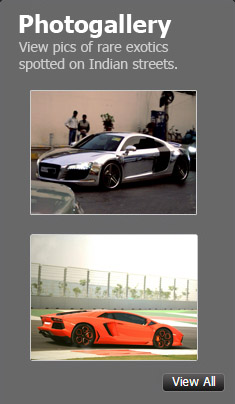News
New Skoda Octavia 2021: Observations after 1 day of driving
The Skoda Octavia has sorted road manners. Out on the highway, at high speeds, the car feels very stable and composed, just as we would expect of a European sedan.
Driving the Skoda Octavia 2.0L Turbo-Petrol Automatic
2.0 turbo-petrol engine makes 187 BHP @ 4,180 - 6,000 rpm and 320 Nm @ 1,500 - 3,990 rpm:

This 2.0-liter turbo petrol engine along with the 7-speed DSG automatic gearbox is the only powertrain on offer in the 2021 Octavia. The combination is shared with the Skoda Superb, Audi A4 and Volkswagen Tiguan Allspace. It will also be seen on some upcoming cars such as the Skoda Kodiaq. The performance of this engine is strong with 187 BHP and 320 Nm on tap, which is 10 BHP and 70 Nm higher than the old car's 1.8 TSI unit. With the increased torque available from low revs, the 2.0 is quite tractable and enjoyable at all speeds. That said, it is disappointing that VAG hasn't bothered to make its durable, efficient & powerful 2.0 TDI engine BS6-compliant. That puts the Octavia at a disadvantage as there are many diesel lovers in the premium segments. Plus, that 2.0 diesel was a workhorse for high-mileage customers in a way that the 2.0 TSI can never be. Petrol has now crossed 100 bucks a liter, and there is a significant operating cost difference between 7 - 10 city km/l and 12 - 14 km/l for the heavy runners. Important to note that all crossovers & SUVs in this price band offer a diesel, as does the Elantra.
In the city, the 2.0 motor's healthy bottom end helps you get around effortlessly. Throttle response is good and the Octavia moves smoothly. Add to that, the direct injection and turbocharger ensure that the engine isn't lethargic at low rpms. There's always more than enough power on tap to accelerate or overtake quickly. The minimal turbo lag just makes it that much more responsive. While the DSG gearbox is super smooth 99% of the time, it can get jerky at crawling speeds in bumper to bumper traffic (an unfortunate DSG trait). Tip: Use the super convenient auto-hold function in traffic.
Drive with a light foot and the gearbox moves up the ratios pretty quickly. It is eager to reach higher gears and you will see it upshift under 2,000 rpm. Impressively though, you won't feel these shifts as the transition is very smooth. The Octavia's steering is light at city speeds and the car doesn't feel as big as its dimensions suggest. A turning radius of 5.2 meters means those tight turns are easily manageable. The Octavia is a breeze to drive & you will enjoy driving it in the city.
Out on the highway is when things go from good to great! This is easily among the most fun-to-drive sedans this side of the luxury marques. You'll find yourself addicted to flooring the throttle whenever there's an empty stretch of road. Outright performance is excellent and the strong mid-range takes care of all the overtaking you need to do. You will literally fly past slower traffic. The downshifts are quick and the gearbox responds well to throttle inputs. The engine revs beautifully to ~6,000 rpm, and importantly, sounds lovely and sporty while doing so. Wishlist? We'd have loved more revs to play with as this rpm level is way too low (some diesels rev to 5,500 rpm!). In terms of cruisability, the Octavia can run at triple-digit speeds all day long without breaking into a sweat. The engine spins at a relaxed ~1,600 rpm at 100 km/h and ~1,900 rpm at 120 km/h. And touring you must do - this car is built for long distance road-trips. In summary, the 2.0 TSI is a jewel of a motor that will keep you happy at low revs & high, and in the city as well as on the highway. Like the Octavia itself, the 2.0 petrol engine too is an all-rounder.
The Octavia uses a 7-speed DSG gearbox, which belongs to the DQ381 family and has a wet clutch setup. Its predecessor, the DQ200 had a dry clutch and was notorious for its failures. The DQ381 has been around for a couple of years internationally and online customer complaints are a fraction of what they were for the DQ200. Still, we have serious reservations regarding the long-term reliability of any VW / Skoda DSG and strongly recommend getting that extended warranty.
Cruising around in D mode, one won't even notice the gears being shifted. They are damn smooth. The kickdown response time is quick and you will never feel that the gearbox is hunting for gears either. It's in the right ratio almost all the time. When you are in the mood to drive the car aggressively, engage Sport mode. This puts the car in 'high alert' mode and its senses are heightened. The DSG holds onto gears longer before upshifting, and you'll also notice that the gearbox is eager to downshift at the slightest of throttle inputs. People with a heavy foot will love S mode for sure. However, in the city where the traffic is heavy, you will find S mode to be jerky.
Paddle shifters have been provided and you will enjoy using them with this turbo-petrol. The response time is quick and they are fun to use on a twisty section of road. Tap the left paddle for a downshift and you'll notice the ECU blipping the throttle to match the revs, which is quite satisfying & addictive. There's a good amount of engine braking available too. But again, with such a combination, the paddle shifters would've been a lot more fun if the engine offered 500 - 1,000 more revs to play with.
Noise, Vibration & Harshness (NVH)
As you would expect in a premium sedan like this, refinement levels are overall satisfactory. The engine idles softly and you'd barely notice it while driving around sedately. Rev the 2.0 TSI and a nice, sporty note is audible in the cabin. Wind noise is well controlled even when driving at 120 km/h.
Mileage & Fuel Economy
The 1.8 TSI engine with the DSG automatic had an ARAI rating of 15.1 km/l. This 2.0 TSI + DSG combination has a slightly higher rating of 15.81 km/l. We would expect 7 - 10 km/l in the city, depending on traffic density. Do note that turbo-petrols are very sensitive to throttle input and if you drive it hard (which you will), the fuel gauge will drop much faster. The Octavia's fuel tank capacity is 50 liters.
Suspension

Ride Comfort
The Octavia comes with a MacPherson strut suspension setup at the front and a Multilink suspension with one longitudinal + three transverse arms at the rear. It rides on 17" rims that are shod with 205/55 section tyres. The tyre PSI recommendation is surprisingly high at 38 PSI (F) / 39 PSI (R). That, and the lack of a 16" wheel option, make the ride on the firmer side compared to the previous-gen. The suspension setup also feels tighter. Despite being firmer though, the ride can be termed as "compliant". The car can handle small to medium-sized potholes, but the big ones do register themselves quite sharply in the cabin. Many owners will run their cars on a more reasonable 32 - 33 PSI range to improve urban ride quality. Highway comfort levels are excellent due to the Octavia's planted nature, controlled body movements & supportive seats.
Do check out the Team-BHP discussion on why tyre PSI recommendations are increasing (better FE, lower emissions & more).
Handling & Dynamics
The Skoda Octavia has sorted road manners. Out on the highway, at high speeds, the car feels very stable and composed, just as we would expect of a European sedan. Expansion joints, irregularities and undulations are handled properly, while the body's vertical movement is controlled. You can cruise at high speeds with confidence.
When the tarmac gets twisty, the car's multilink rear suspension gives it good manners. Body roll is within limits and the car doesn't feel bouncy. Must mention that it doesn't lose composure easily when you hit undulations mid-corner. Watching over your every move are the electronic aids like ESP which can be lifesavers in emergency manouveurs.
While the suspension is sorted, the fly (and a big fly at that!!!) in the ointment is the tyre setup. The 205/55 R17 Goodyear Assurance tyres are absolutely rubbish. Horrible. Pathetic. They fail to keep up with the performance & handling capabilities of the car. The tyres chirp easily and you get torque steer even without really burying the throttle. In tight corners, you will hear them squealing like a kid getting his vaccination shot, and struggling for grip. Even if you don't want thicker rubber, please change these rubbish tyres to a better make or model. Of course, driving enthusiasts should get fatter 225s, which will not just offer superior grip, but also improve the car's stance.
Steering
The electric power steering is a nice and user-friendly unit. It's light at slow speeds, which makes it easy to manouveur the car in the city. As the speedometer needle climbs, it weighs up in a linear manner. However, while the steering is direct, there's not much feel or feedback from it - as is the case with most VW group cars.
Braking
The all-wheel disc brake setup provides very good braking performance. Emergency braking situations are handled really well and the car sheds speed effectively. The pedal feels sharp and the bite point is predictable as well.
Niggles & Problems
Skoda is the first name that pops to mind when we speak of unreliability and bad after-sales experiences. Truth is, many owners of the previous-gen Octavia / Superb 1.8 TSI DSG have suffered multiple breakdowns. Problems & issues have accelerated past 50,000 km and part costs are expensive. Although the new DSG is (hopefully) is more reliable, the car is still very complex and the dealerships are the same. Don't expect a Toyota / Maruti / Hyundai Elantra kind of ownership experience at all. Take the extended warranty without a second thought and be sure to get the car serviced on time. For its part, Skoda is trying to improve its brand image with maintenance packages etc., but the dealers are the same and the cars are complicated.
Continue reading the discussion on the 2021 Skoda Octavia 2.0 TSI DSG on our forum.








.jpg)













